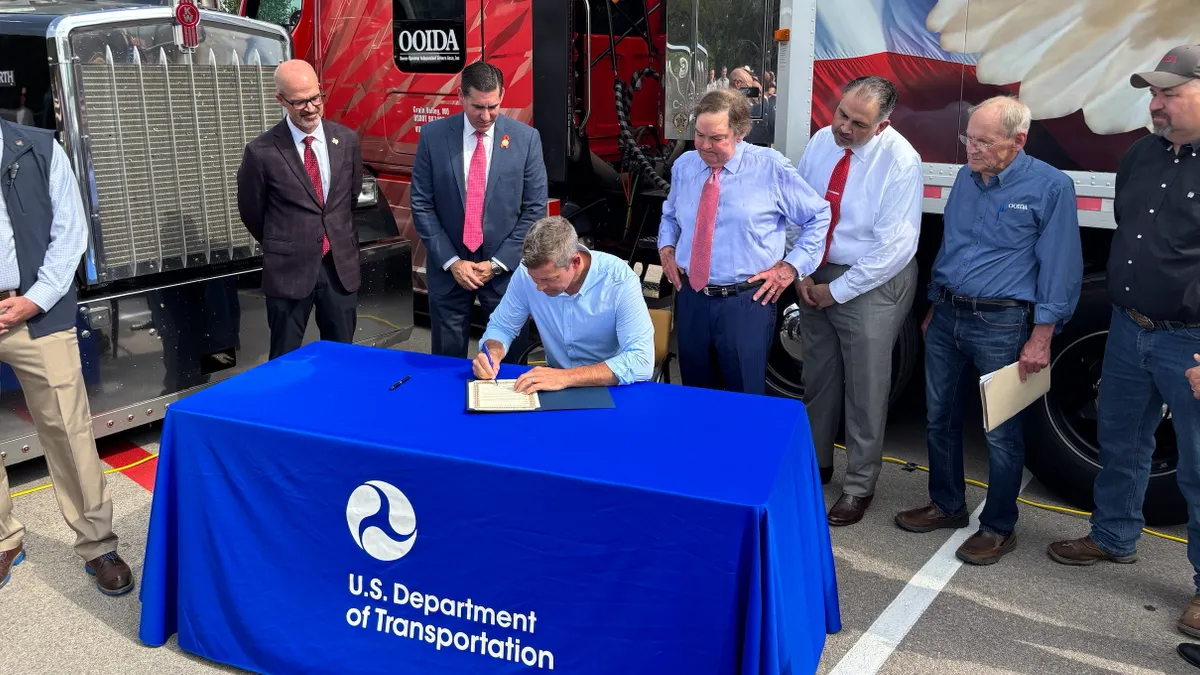A tough year has generally reduced revenues for trucking companies, but Q2 earnings calls showed some silver linings along with some other, more reigned-in outlooks.
“This is in year three of the trucking downturn,” TD Cowen’s Jason Seidl, managing director in research and senior transport analyst, said in mid-August. “Have things gotten worse? No. Have they gotten better? Very, very mildly.
That mild progress has emerged in some transportation firms' earnings reports through measures such as revenue per load, sequential revenue and operating income for carriers Landstar, Old Dominion and Knight-Swift, respectively. While year-over-year revenues generally continued to drag, several trucking leaders pointed to Q1-to-Q2 upticks as a sign of optimism and network improvements.
Amid that market backdrop, carriers also foreshadowed potential scenarios for the remainder of the year.
For Knight-Swift Transportation Holdings, potential project work coming to fruition could benefit the carrier in the back half of the year, CEO Adam Miller said. “I think that could provide some upside in margins and that I think would lead to a more favorable bid environment next year where I think we'd have an opportunity to raise contractual rates,” he said.
Similarly, Werner Enterprises noted some progress in its earnings. When asked about its Truckload Transportation Services, which consists of dedicated and one-way businesses, CFO Chris Wikoff said the carrier has positive Q3 revenue and a positive outlook.
“Overall, it’s been a good start to Q3,” he said, adding that from Q2 to Q3, broadly speaking, “we're also seeing very positive momentum in logistics, and we expect that to continue.”
Despite some signs of progress, multiple LTL carriers also expressed reservations on the market cycle finally breaking through in a meaningful way.
“I'm not ready to make a call to say that things will turn around and we'll get the acceleration that we typically would see in August and September,” Old Dominion Freight Line CFO Adam Satterfield said.
He suggested the market environment will emerge more clearly with mid-quarter updates.
Saia CEO Fritz Holzgrefe also took more of a wait-and-see approach.
“We'll have to see what the market has in store for us,” Holzgrefe said. “But I think we've got some additional sort of opportunities through the quarter that I think we'll see materialize. We're still not 100% certain around what the top line looks like, but I do know that we have — we'll continue to look for cost optimization opportunities and deploy our tools to do that.”
In general, trucking carriers continued to note the uncertainty factor that U.S. tariff policy is having, even suggesting that such uncertainty could linger in Q4.
“We expect the economic uncertainty that characterized the second quarter to persist into the back half of the year with trade policy continuing to evolve,” Schneider National CEO Mark Rourke said.
Rourke added that the ongoing effects of current regulatory enforcement of English language proficiency standards were unclear. In addition to ELP standard enforcement, the State Department also paused certain work visas for truck drivers in August.
Analysts have meanwhile suggested the impact of English language proficiency enforcement will not be as steep as some carriers suggest. Demand is more of a driver to lifting up the market cycle, Michigan State University supply chain management professor Jason Miller said on LinkedIn.
But with ELP enforcement, capacity is being taken out of the market, and the backfill of positions will become more difficult, Seidl said. That attrition might end up around 2% or 3%, making it a significant factor to pay attention to in the market turnaround, he said.
Correction: This story was updated to correct a misspelling in an initial reference to Saia CEO Fritz Holzgrefe.










